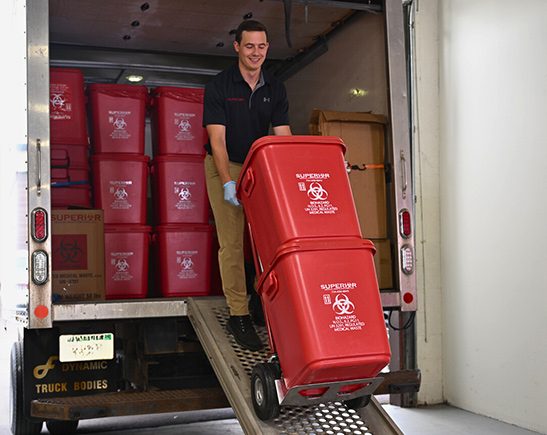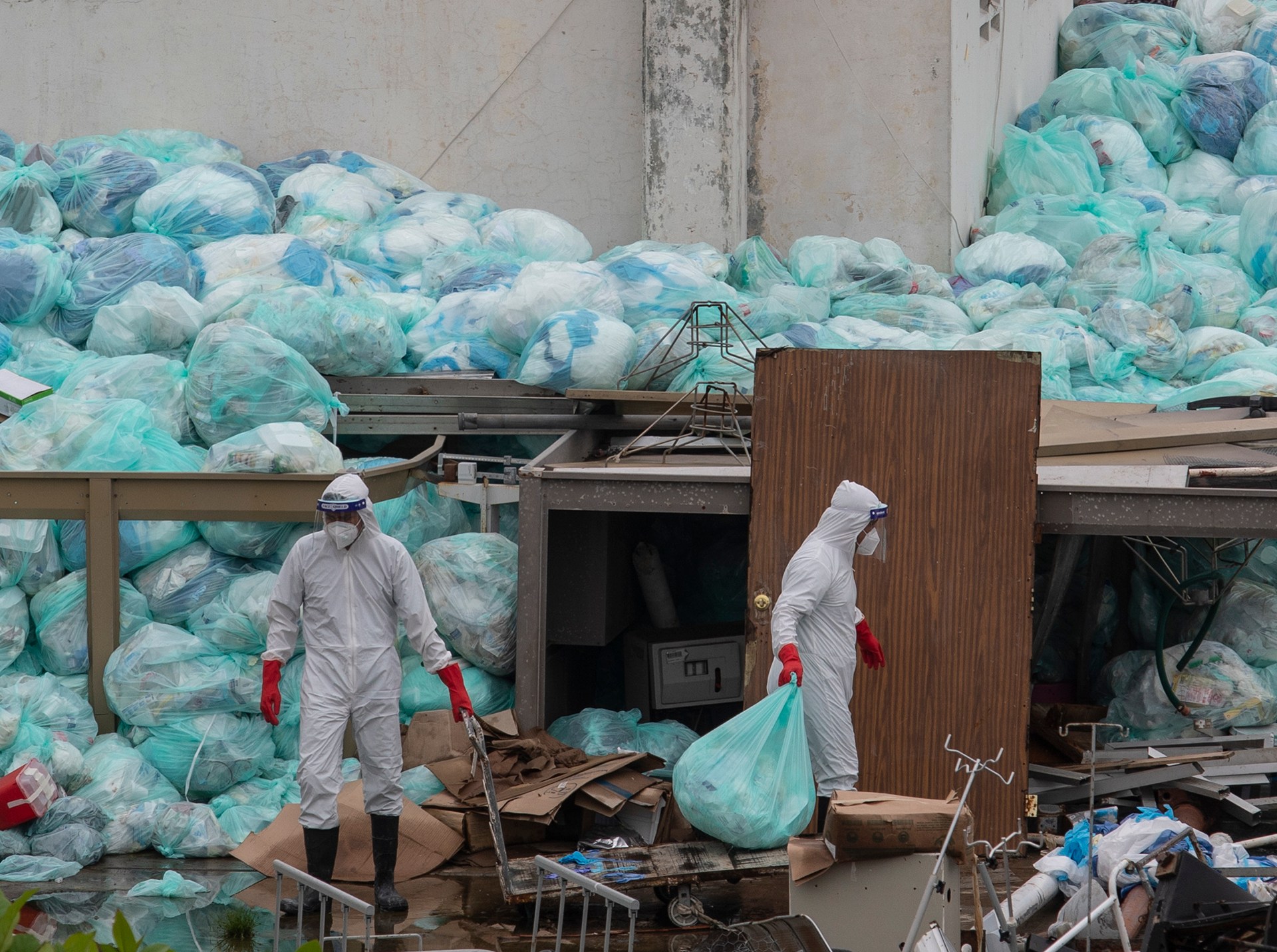Ecological Responsibility: The Eco-Friendly Strategy to Medical Waste Disposal
Ecological Responsibility: The Eco-Friendly Strategy to Medical Waste Disposal
Blog Article
Comprehending the Various Sorts Of Waste Disposal Methods
In the realm of waste monitoring, the selection of disposal techniques available today is large and differed, each approach offering a distinctive objective in addressing the challenge of waste disposal. click here. From reusing approaches that aim to give new life to products, to the detailed procedures of hazardous waste administration, the landscape of waste disposal is complicated yet critical for environmental sustainability. Understanding the nuances of these different methods not only drops light on the value of liable waste monitoring yet also motivates us to reconsider our approach towards garbage disposal in a quickly progressing world

Recycling Methods
Reusing approaches are essential for sustainable waste monitoring methods in both domestic and commercial setups. medical waste removal service. By implementing reliable recycling techniques, a substantial amount of waste can be drawn away from garbage dumps, preserving natural sources and decreasing the ecological effect of production procedures
In suburbs, curbside recycling programs play an important duty in encouraging families to different recyclable materials from basic waste. Materials such as paper, plastics, glass, and metals can be arranged and collected for processing right into new products, lowering the need for basic materials and energy-intensive production processes.
Industrial facilities additionally count on reusing approaches to minimize waste generation and advertise a round economy. By executing closed-loop systems, organizations can reuse materials within their production procedures, lowering costs and environmental impact. medical waste removal. Additionally, industrial recycling programs usually involve partnerships with specialized reusing centers to ensure that materials are correctly sorted, refined, and rehabilitated into the supply chain
Composting Methods

Aerated static stack composting involves blending natural waste products in a huge pile and consistently transforming it to ensure proper aeration. This strategy is well-suited for smaller-scale procedures and families.
In-vessel composting involves putting organic waste in a shut container with regulated problems for temperature level and aeration. Windrow composting includes forming long rows of organic waste and on a regular basis transforming them to advertise decomposition - medical waste disposal.
Landfill Disposal
Garbage dump disposal is a commonly used approach for managing waste that can not be reused or composted. It entails burying waste in assigned locations of land, with proper safety measures to avoid environmental contamination. Land fills are engineered facilities created to separate waste from the surrounding environment. The waste is compacted and covered with dirt day-to-day to decrease smells, hinder pests, and reduce the spread of trash. Modern land fills are geared up with safety linings and keeping an eye on systems to stop leak of harmful compounds right into the dirt and groundwater. Methane gas, a byproduct of breaking down organic waste in garbage dumps, is often gathered and made use of as a source of renewable power. Despite improvements in garbage dump modern technology, concerns remain about the long-term environmental impacts, such as groundwater contamination and greenhouse gas emissions. Efforts to reduce reliance on landfills include promoting waste reduction, reusing, and discovering different garbage disposal approaches to lessen the ecological footprint connected with conventional landfill disposal practices.

Waste-to-Energy Incineration
Incineration of waste for energy generation is a technique significantly being thought about as a choice to traditional garbage dump disposal strategies. Waste-to-energy incineration involves the combustion of waste products at heats, generally in specialized centers developed to produce power or warm with the procedure - click here. This method not just decreases the quantity of waste that would certainly otherwise be predestined for land fills but likewise uses the heat created throughout incineration to develop energy
One of the crucial advantages of waste-to-energy incineration is its ability to produce power while minimizing the environmental influence contrasted to conventional garbage dump disposal techniques. By transforming waste right into power, this approach helps in decreasing greenhouse gas discharges and dependence on fossil gas for power generation. Additionally, waste-to-energy facilities are geared up with sophisticated air contamination control modern technologies to minimize potential environmental contaminants released throughout the burning process.
Contaminated Materials Monitoring

Considering the vital significance of liable waste monitoring practices, especially in the world of environmental sustainability, the emphasis currently shifts in the direction of the intricate domain name of Hazardous Waste Monitoring. Contaminated materials presents considerable risks to both human health and the setting, requiring specialized handling and disposal strategies. Typical examples of hazardous waste consist of chemicals, batteries, pesticides, and digital waste.
Harmful Waste Administration involves the recognition, collection, transportation, therapy, and disposal of materials regarded unsafe or potentially dangerous. This procedure requires adherence to stringent regulations and standards to reduce damaging more influence on ecosystems and public wellness. Various approaches are employed in taking care of contaminated materials, consisting of recycling, secure land fills, encapsulation, and chemical treatment.
Appropriate Hazardous Waste Administration is crucial for stopping contamination of soil, water sources, and air contamination. It is important for sectors, laboratories, medical care facilities, and various other generators of contaminated materials to execute durable monitoring techniques, training programs, and emergency situation response prepares to make sure the secure handling and disposal of these materials. Failure to handle contaminated materials appropriately can have significant effects, emphasizing the importance of liable and diligent practices in this field.
Final Thought
In verdict, garbage disposal techniques play a vital duty in handling and minimizing the impact of waste on the environment. From recycling and composting to garbage dump disposal and waste-to-energy incineration, each technique has its own benefits and restrictions. Correct monitoring of unsafe waste is additionally important to protect public health and the environment. It is essential for industries and individuals to understand the various garbage disposal strategies offered and select the most proper technique for sustainable waste administration.
In the world of waste administration, the variety of disposal techniques readily available today is vast and varied, each technique serving a distinct function in attending to the challenge of waste disposal. click here. From reusing techniques that aim to offer new life to products, to the complex processes of hazardous waste monitoring, the landscape of waste disposal is intricate yet vital for environmental sustainability. Understanding the subtleties of these various techniques not just drops light on the significance of liable waste monitoring but additionally triggers us to rethink our strategy in the direction of waste disposal in a rapidly advancing world
Efforts to minimize reliance on land fills include advertising waste reduction, reusing, and exploring different waste disposal techniques to minimize the ecological footprint connected with traditional garbage dump disposal practices.
It is crucial for industries and individuals to recognize the different waste disposal strategies available and select the most appropriate technique for lasting waste management.
Report this page